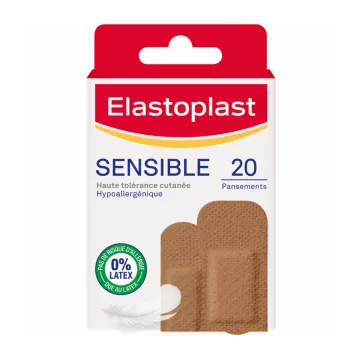
What is a scratch and how can I recognize it?
A scratch refers to a superficial lesion of the skin, often caused by rubbing against a rough surface. Unlike a cut, a scrape doesn't usually result in a clean incision, but rather a graze that mainly affects the epidermis. Common symptoms include redness, slight swelling, and sometimes pain to the touch. This type of injury is common among children and active adults, and although it's usually minor, proper attention is needed to prevent infection.
What are the first steps to take in the event of a scratch?
When a scratch occurs, the first step is to thoroughly clean the affected area to remove particles and prevent infection. Use lukewarm water and mild soap to wash the wound, avoiding scented or abrasive soaps that could further irritate the skin. After cleaning, it's advisable to apply a light antiseptic cream to support the healing process and cover the area with a sterile dressing if necessary, especially if the wound is likely to get dirty.
How can I speed up the healing process?
To promote rapid and effective healing, keep the wound clean and dry. Change the dressing daily or as needed to keep the abrasion protected from external irritants. Adequate skin hydration is crucial; consider using aloe vera-based ointments or emollient substances to keep the skin supple and prevent flaking around the wound. Avoid scratching or rubbing the area, as this can delay healing and increase the risk of scarring.
Are there effective home remedies to treat a scrape?
There are several home remedies that can complement traditional scratch care. Applying honey to the wound can help, thanks to its natural antibacterial properties. Aloe vera gel, known for its soothing and restorative effects, is also an excellent choice. However, it's important to test these substances on a small area of skin before applying them to a scratch to avoid any allergic reaction.
When should I consult a doctor about a scrape?
Although most scratches are minor and can be treated at home, it's essential to watch for signs of infection. Consult a doctor if you notice excessive redness, swelling, persistent heat around the wound, or if the pain intensifies. In addition, if the scrape is the result of exposure to a potentially infected animal or object (such as rusty metal), medical consultation is imperative.
How can I tell the difference between a scrape and other types of skin injury?
Being able to distinguish a scrape from other injuries, such as cuts or bruises, is essential for appropriate treatment. A scrape is generally characterized by a superficial abrasion that does not cut deeply into the skin, whereas a cut is an incision that can reach deeper layers of the skin and often bleed profusely. Contusions, or bruises, involve injury to the tissue beneath the skin without breaking the skin surface. Recognizing the type of injury allows you to choose the right treatment method and avoid complications.
Can scratches be prevented?
Preventing scratches is particularly relevant in environments where physical activity is frequent, such as when playing sports or with children at play. Wear protective clothing such as long sleeves and thick pants when engaging in high-risk activities. Keeping play and work environments free of sharp or abrasive hazards can also reduce risk. Finally, teaching children to be careful during their activities can reduce the frequency of injuries.
What are the best practices for disinfecting a scratch?
Disinfecting a scrape is crucial to preventing infection. After cleaning the area with mild soap and water, apply a mild antiseptic solution. Products containing alcohol or hydrogen peroxide are often recommended, but they can irritate the skin. It's best to use mild antiseptic solutions such as chlorhexidine, or antibiotic creams prescribed by a doctor, if necessary. Be sure to follow the instructions on frequency of application to optimize healing.
How to treat scratches in children?
Children's scratches should be treated gently and carefully. After calming the child, gently clean the wound with warm water and a non-irritating soap. Apply a thin layer of antibacterial cream and cover the area with a bandage appropriate to the size of the scratch. Explain the importance of not touching or scratching the wound. Monitor healing and consult a doctor if signs of infection appear, or if the child complains of unusual pain.
What complications can arise from an untreated scrape?
An untreated or poorly cared-for scrape can lead to a number of complications, including infection. Infection is manifested by signs such as increased redness, warmth, swelling and the presence of pus. If left untreated, infection can spread to deeper tissues or enter the bloodstream, leading to more serious conditions such as sepsis. Permanent scarring can also result from a poorly treated scrape, especially if the skin is constantly irritated or the injury is repeated in the same place.